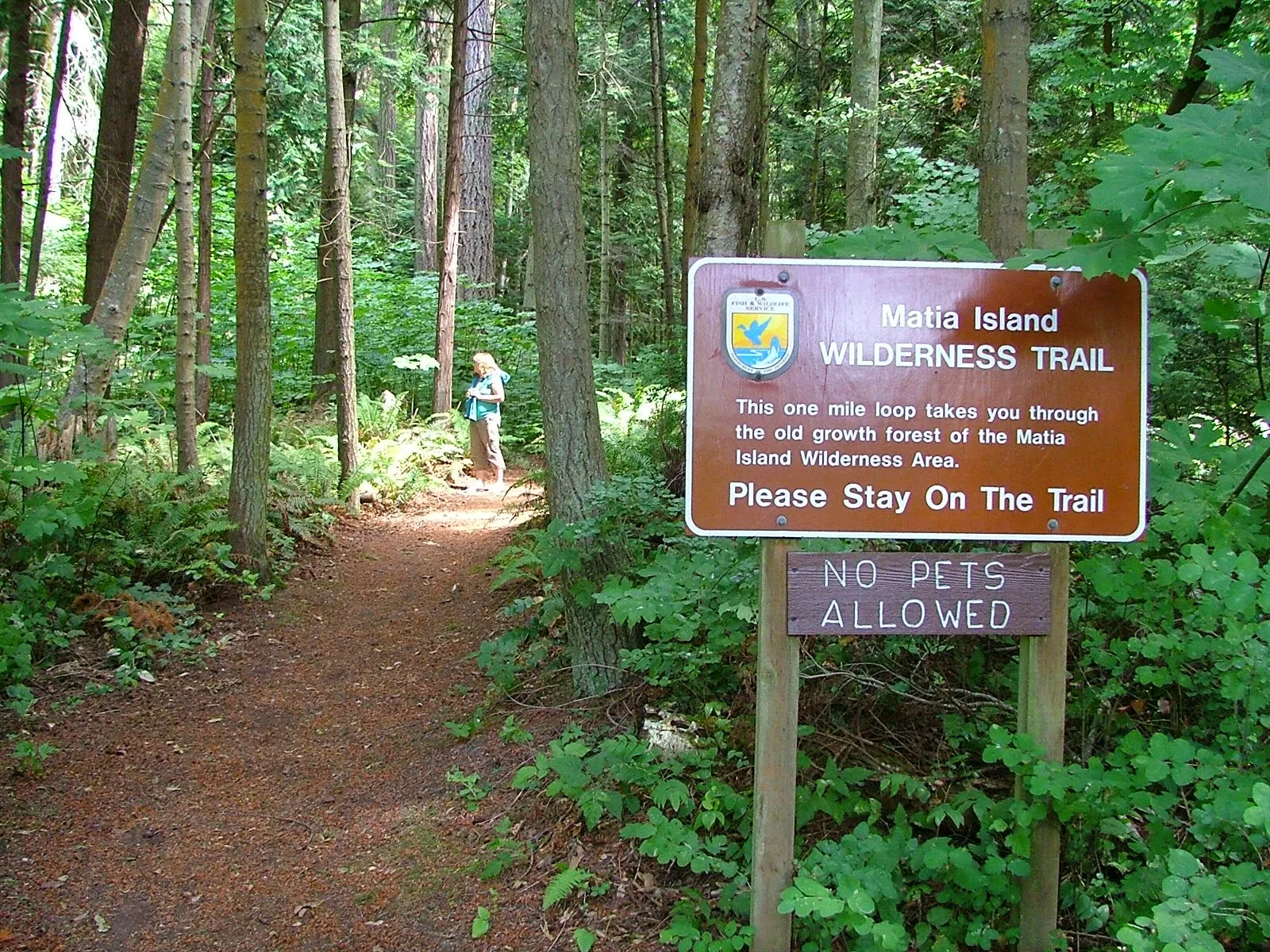A few years back, I hiked the trail from Pelican Beach to the top of Eagle Bluff on Cypress Island, taking pictures every few minutes along the way. The resulting pictorial is a pretty good synopsis for those that can't make the journey themselves. See the Eagle Bluff Pictorial hike here. I decided to do the same thing on Matia, but with a little change up. First I hiked the trail snapping away with wild abandon, then I jumped in the dinghy and hugged the shore continuing taking pictures while I circled the island. Then I deleted most of what I had. The results are below, you decide if it was worthwhile.
 |
| The blue marker on the far left marks Rolfe cove, and where we begin our visit to Matia |
First off, exit the dock!
The little four boat float, may be full, but there are two buoys and room for a few boats to anchor. In a pinch you can anchor in the much larger cove at the other end of the island and do this hike/dinghy tour in reverse.
 |
| Boater park fees are a great deal for what we get in return. |
 |
| The trail starts at the top of ramp beyond the small picnic campground area. Matia is unique in that fires are not allowed anywhere, and pets are restricted from trail system. |



